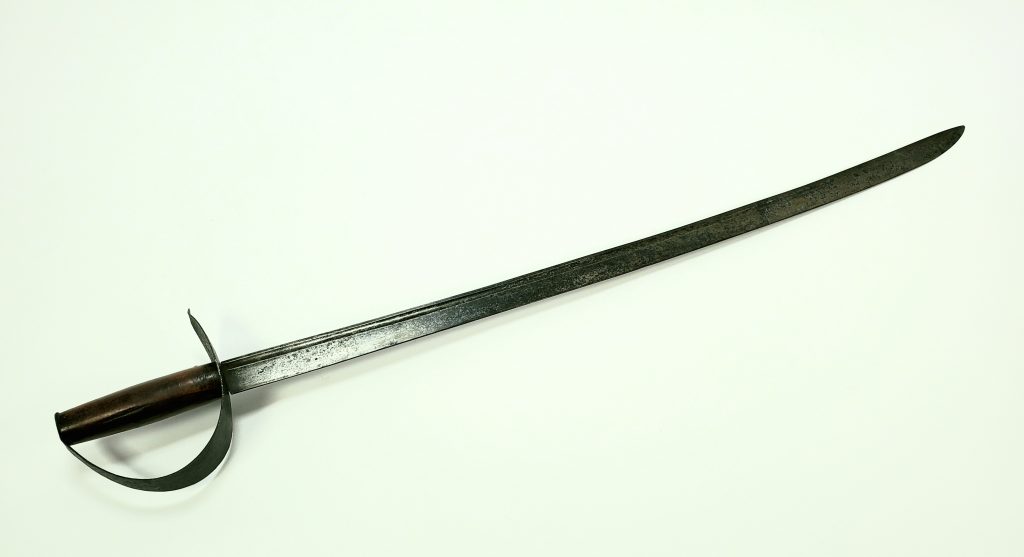People sometimes disregard simple swords that are not ornate and washed in gilt or made from precious metals. I used to feel that way till I saw a simple hanger in a private collection last year with a provenance to April 19, 1775, that I mentioned it in a blog back in December. An imported blade, a simple iron hilt, and a bone grip. Functional but not eye grabbing to most. Last week I took in another that while similar to the identified April 19 sword is still a bit different.
American-made swords were not all crude during the 18th century. There many I have seen that equal if not rival European makers. I have mentioned some of the American silver hilted swords in past articles by the Boston maker William Cowell Jr. But this one and its simple form I find fascinating.

The blade is English and marked with a running Fox on one side. This is the mark of the Samuel Harvey, a Birmingham, England sword maker working from 1748 to around 1800. Sometimes they are marked with “S.H.” and the fox, and as we can see on this blade, just the fox. While arms historians haven’t exactly been able to date the swords based on the mark, I would suspect this is one of the earlier Harvey markings. It has a single fuller near the spine and some of the forging marks can be seen on the blade. Could it have come from another sword, or were the blades purchased in bulk and shipped to the Colonies prior to the 1774 arms embargo and the outbreak of war? We know that many of the makers here were using imported blades that were being shipped over from Europe.
The hand guard and knuckle bow are one piece made from flattened thin sheet iron, with a point at the quillon, then flaring out to protect the hand and narrowing for the knuckle bow with the tang of the blade peened over to secure this simple hilt to the blade.
The grip looks to be made from a fruitwood, probably cherry, which also helps verify its American-made roots. There are also three iron nails that may have helped keep the wooden grip from turning on the blade tang. Whether this feature is original or added later is hard to know for sure.
A simple, cheap to make, and functional hanger that was made for functionality and not beauty. That said, I still find it beautiful in its own way.






